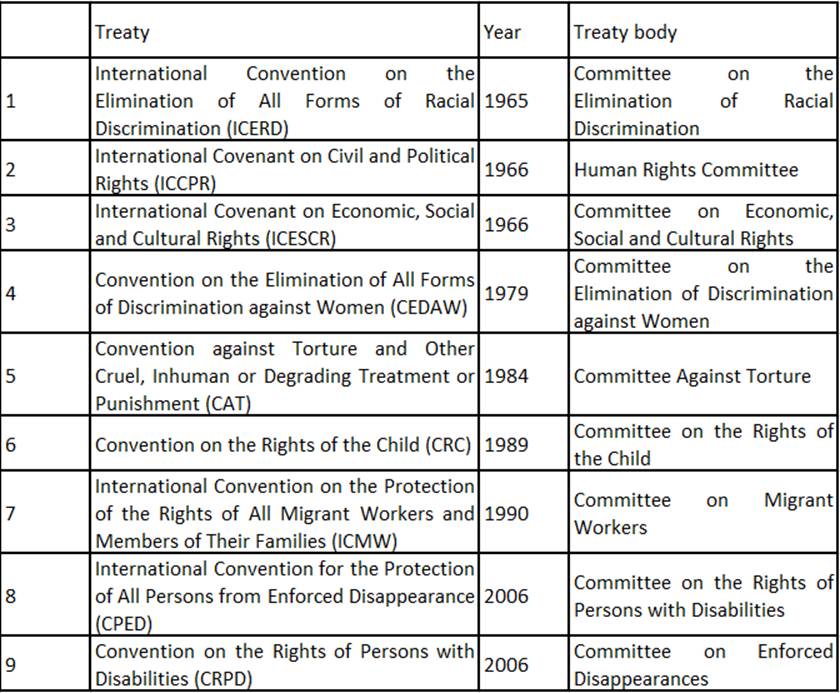A Briefing on International Law and Abortion

[Today’s guest article is by Dr. Calum Miller.]
Introduction
Opponents of the right to life often claim that abortion is a human right, and that “the UN says so.” Neither of these is true. While some UN agencies and treaty bodies with no legal authority often advocate for abortion against the explicit position of many States, international law has always been very clear that abortion is not a human right. This goes without saying: it is hard to see how international consensus could be established for a position that the majority of countries still do not accept.
There are a number of international institutions and mechanisms that may make pronouncements on abortion:
Of these, only 2) and 4) may place legally binding pronouncements on States. None of the other mechanisms carry legal authority, though some (as we shall see) have some political and diplomatic force.
As a preliminary note, while some resolutions have called for “sexual and reproductive health services,” which is typically understood to include abortion, this has always been highly qualified, particularly with respect to state sovereignty.
1. International declarations
These include, most famously, the Universal Declaration of Human Rights. In short, they say nothing about abortion, but include some language supporting the right to life. Since these declarations are not legally binding and have generally been incorporated into binding international law via treaties, we will not consider them further.
2. International treaties/conventions/covenants
These are legally binding. The UN lists 9 core international human rights treaties:

None of these provides a right to abortion. However, the International Covenant on Civil and Political Rights states clearly:
“1. Every human being has the inherent right to life. This right shall be protected by law.” (Article 6)
This right is not violable even “In time of public emergency, which threatens the life of the nation” (Article 4), and even more so for lesser reasons.
The ICCPR also permits the death penalty, but specifically excludes pregnant women from the death penalty, clearly intending to include unborn humans within the scope of legal protection.
The Convention on the Rights of the Child, another binding international treaty, re-affirms this right to life of every child (Article 6) and states that:
“States Parties shall ensure to the maximum extent possible the survival and development of the child” (Article 6)
It also makes explicitly clear that childhood begins before birth:
“the child, by reason of his physical and mental immaturity, needs special safeguards and care, including appropriate legal protection, before as well as after birth” (Preamble, emphasis added)
While this statement occurs in the Preamble, which is not legally binding, States are required to use the Preamble in interpreting the text of the Articles. In this case, it is clear that the Articles should therefore include children before birth within the scope of “children.”
3. Treaty bodies
Some confusion arises because the independent treaty bodies set up to monitor compliance with these treaties often have the same acronyms as the Conventions to which they are linked. These treaty bodies are independent: although they are mandated by the UN, they do not represent states and have no authority of any kind, only giving “expert” opinions. Hence, although some treaty bodies have called for abortion to be legalised, this represents at best the personal opinion of a small group of individuals with no relevant authority.
That this process does not even reflect expert opinion and has instead become ideological is becoming increasingly clear. For example, the Human Rights Committee’s initial draft General Comment on the right to life in 2015 makes significant mention of “unborn children,” even saying that “States parties may choose to adopt measures designed to protect the life, potential for human life or dignity of unborn children, including through recognition of their capacity to exercise the right the life.” It recalled also that the American Convention on Human Rights explicitly guarantees the right to life of unborn children from the moment of conception. All such language was taken out for the final version after intensive lobbying from pro-abortion groups.
Likewise, when the final draft came out, the Chair of the Committee himself claimed that the new text “will imply legalization of abortion without restriction which in itself will deny the right to life of the unborn baby.” He also accused his own committee of “ignoring all medical evidence.” Instead of being able to give his opinion as a human rights expert, he was chastised and told to be quiet by other committee members.
4. UN Security Council Resolutions
None of these provide a right to abortion. While Resolution 2122 within the Security Council’s “Women, Peace and Security Agenda” (2013) noted the need for the “full range of sexual and reproductive health services,” this was only “noted” and hence cannot oblige countries to legalise abortion. Moreover, the resolution has since been disavowed by the US, who originally passed the resolution, and it applies only to humanitarian crises involving armed conflict. The resolution bases itself on the Beijing Declaration and Platform for Action, which explicitly says that “Any measures or changes related to abortion within the health system can only be determined at the national or local level according to the national legislative process.” The Beijing Declaration and Platform for Action also recalls the commitment of the ICPD which requires States to reduce recourse to abortion, and prohibits abortion being promoted as a method of family planning.
Finally, the statement occurs in the Preamble, which is not legally binding, though States are required to use the Preamble in interpreting the text of the Articles.
5. UN General Assembly Resolutions
Although more authoritative than those passed by the Human Rights Council, these are not legally binding. In any case, they have never provided a right to abortion.
6. UN Human Rights Council
The Human Rights Council (UNHRC) is comprised of various mechanisms, including resolutions, Universal Periodic Reviews (UPRs), and reports by Special Rapporteurs.
The UNHRC is a subsidiary body of the General Assembly, meaning it has even less authority – all of its resolutions have to be adopted by the General Assembly to be recognised as international consensus. In any case, no UNHRC resolution has ever claimed that abortion is a human right.
UPRs are simply a mechanism for states to scrutinise other states’ human rights compliance; they do not represent any kind of international consensus.
Special Rapporteurs have occasionally claimed that abortion is a human right. However, they have no authority whatsoever, and merely represent the personal opinion of that Rapporteur.
7. Other UN agencies
These include various UN entities such as OHCHR, agencies such as UNFPA, and specialized agencies such as the WHO. They are mandated by the General Assembly to provide information in various capacities, but hold no authority over States, nor are there robust accountability mechanisms ensuring they reflect international consensus. In addition, they have been found to promote demonstrably false information regarding abortion.
8. Other international political agreements
The most salient of these was the Programme of Action signed at the International Conference on Population and Development. While this is not legally binding, it is an important document containing consensus positions adopted by 179 governments and is generally considered the international “standard” on women’s health. Although it contains some pro-abortion language, it also clearly states:
“Governments should take appropriate steps to help women avoid abortion, which in no case should be promoted as a method of family planning.” (7.24)
It also requires governments to “reduce recourse to abortion”. (8.25)
The ICPD is still widely recognized – even by pro-abortion countries – as being the landmark political agreement on reproductive rights. It was followed a year later by the Beijing Declaration and Platform for Action, which repeats these same points.
Summary
In summary, while there are many international bodies centered around the UN, very few of them actually represent international consensus, and even fewer represent legally binding agreements.
The only legally binding agreements do not ever claim that abortion is a human right. On the contrary, they describe the right to life of all human beings, including children before birth. At least two major legally-binding international agreements enshrine protection for unborn children:
- International Covenant on Civil and Political Rights (legally binding treaty):
“1. Every human being has the inherent right to life. This right shall be protected by law.” (Article 6)
If unborn children are human beings – which, as we have seen, is proven by science – then in international law they have a right to life which requires legal protection. This right is not violable even ‘In time of public emergency, which threatens the life of the nation’ (Article 4). The ICCPR also forbids capital punishment specifically for pregnant women, recognising that unborn children need extra legal protection.
- The Convention on the Rights of the Child (legally binding treaty)
“States Parties shall ensure to the maximum extent possible the survival and development of the child.” (Article 6)
It also makes explicitly clear that childhood begins before birth:
“the child, by reason of his physical and mental immaturity, needs special safeguards and care, including appropriate legal protection, before as well as after birth” (Preamble)
Finally, the agreement signed at the International Conference on Population and Development, while not legally binding, is an important document containing consensus positions adopted by 179 governments. It states:
“Governments should take appropriate steps to help women avoid abortion, which in no case should be promoted as a method of family planning.” (7.24)
It also requires governments to “reduce recourse to abortion.” (8.25)
Countries are bound by international law to protect the right to life of all human beings, including children before birth, and bound by political agreement not to promote abortion as a method of family planning, as well as to take steps to help women avoid abortion. Legalization of abortion is the exact opposite of these commitments.
[Photo credit: Arpit Rastogi on Unsplash]
If you appreciate our work and would like to help, one of the most effective ways to do so is to become a monthly donor. You can also give a one time donation here or volunteer with us here.




Leave a Reply
Want to join the discussion?Feel free to contribute!